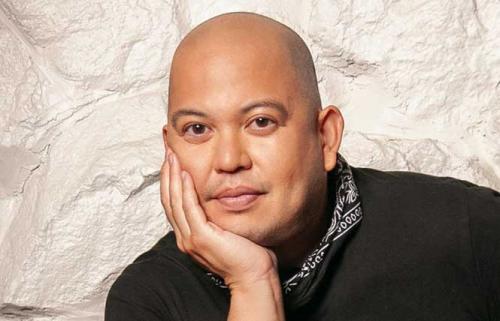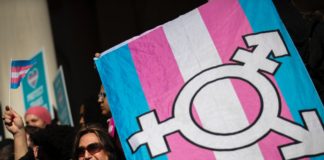In the early morning of June 12, 2016, a domestic terrorist entered Pulse, a gay nightclub in Orlando, Florida, and opened fire. The gunman was equipped with a semiautomatic rifle and a nine-millimeter semiautomatic pistol he had purchased legally at the St. Lucie Shooting Center about a week earlier. Saturday was Latin night at Pulse, and that evening there were somewhere between two and three hundred clubgoers, mostly queer Latinxs and other people of color. By the end of the attack, forty-nine people were dead, and more than fifty others were physically injured. Among the dead were a recent high school graduate, a sales associate, a military veteran, a choreographer, a theme park employee, an undocumented immigrant, several college students, and a mother of eleven who had twice beaten cancer. The attack occurred less than one year after the U.S. Supreme Court declared gay marriage legal.
Later that day, Rick Scott, the governor of Florida at the time, was quick to opine that radical Islamic terrorists were behind the Pulse shooting; he was part of a chorus of Republicans ready to weaponize the shooter’s racial identity to advance their own anti-Muslim agenda. In their first set of news conferences and tweets, Scott and his Republican colleagues described the Pulse shooting as an act of terror against “Americans,” conveniently omitting that the attack targeted queer Latinxs and people of color. These “straightwashed” and “Whitewashed” framings of the Pulse shooting minimized the unique devastation felt by LGBTQ Latinxs, both in and beyond Orlando.
For LGBTQ Latinxs, this wasn’t just a mass shooting at a nightclub. As journalist Veronica Bayette Flores notes, “The Pulse nightclub shooting robbed the queer Latinx community of a sanctuary.” Four days after the attack, poet and writer Rigoberto Gonzalez penned a piece for BuzzFeed explaining why Pulse felt so personal. “Latino gay clubs or Latin nights at any other gay club appealed to my sexuality and to my ethnicity,” Gonzalez notes. “Oh, yes, how I cherish the time I have spent in clubs like Pulse in cities like Orlando, where gay Latinos … gravitate because we love men and we love our homelands, and that’s one of the places our worlds converge.” For Flores and Gonzalez, Latin night at a gay club is one of the few spaces where they can just be — unapologetically.
The Monday after the Pulse shooting, I attended a vigil at Grand Park in Downtown Los Angeles, where I ran into several of the men I had interviewed for this book. When I said my hellos, many echoed some version of “That could’ve been us.” One of the interviewees I ran into was Enrique Sandoval (b. 1983), a Mexican American artist. The Pulse shooting hit him especially hard. While he had never been to Pulse specifically, he knew what it meant as a cultural and community space. Enrique’s queer coming of age was inseparable from the gay Latino scene, and especially Friday nights at Circus Disco, which for decades had been one of Southern California’s most prominent Latino gay clubs before it was torn down in 2016. Circus was a massive two-story club with several dance floors: hip-hop and reggaeton might be playing in one room, Beyoncé and Britney Spears in another, and Spanish rock in a third. The crowd comprised mostly Latino gay men, but they were as diverse as the music blasting in the respective rooms.
“Circus is like church,” Enrique had told me a few years earlier. “It’s where everyone meets up. It’s where everyone who is a Latino gay guy at some point comes to see all the people they know. It’s that mecca that feels like home.” Circus was where Enrique came to embrace being gay after a lifetime of associating it with shame. It was where he first connected with the gay Latino friends who eventually became part of his chosen family. At Circus, he found the social support and acceptance that he lacked in his home life. Unlike many of the other men I interviewed, Enrique didn’t attend college, where there were student organizations and cultural centers in which he could explore his sexuality, so Circus became a campus of sorts to him. It was where he became familiarized with gay pop culture. It was in which he learned about local gay Latino organizations. It was where he learned about how HIV/AIDS disproportionately affected Black and Latino gay men. For much of his early adult life, the community at Circus mattered more to him than his blood family and his childhood friends.
Gay men of color, for most of their lives, rarely find themselves in spaces where they can fully embrace both their racial and sexual identities. In their families, they’re marginalized for being gay; in their schools and the larger society, they’re marginalized for being gay and people of color. Gay bars — especially those frequented by other gay people of color — provide opportunities for connection and community. As the anthropologist Martin Manalansan writes, the gay bar “is the most prominent space for socialization and, for many, authentic belonging to the community.” Although many of these establishments cater to White gay men, ethnic-themed parties like Latin night provided rare opportunities for queer people of color to express and experience their full humanity — the three or four hours in the week when they can strut and dance and gab and love as fiercely as they desire, where they can stand out without standing out.
Discovering these queer communities of color in LA wasn’t always straightforward. The second-generation gay men I interviewed came to learn about places like Circus and other queer POC scenes through meeting other gay men of color, both in person and online, who brokered their entrée into these spaces.
T-Parties and queering ‘the Hood’
Justin Ruiz (b. 1981), a Mexican American hair stylist who grew up in Echo Park, first started hanging out in West Hollywood when he was a sophomore in high school, more than two decades ago. At age fifteen he and his friends weren’t old enough to get into the bars and clubs, so they’d sit outdoors for hours at restaurants and coffee shops along the main strip of gay establishments on Santa Monica Boulevard. “We would take our asses to West Hollywood just to go, almost like mall rats, but like West Hollywood rats,” he recalled, nostalgia radiating from his voice. “You would go be a fucking West Hollywood rat at that one pizza place and literally just eat pizza and hang out and just meet other young gays. That’s what a lot of the young gays would do, because you couldn’t get into any of the clubs at the time.” Justin and his friends were what sociologist Theo Greene calls “vicarious citizens” — they were young gays who felt part of the WeHo community, even if they didn’t live there.
The drive from Justin’s home to WeHo took more than half an hour, but he made it a point to make the trip at least a few times a week “just to be around the gays.” This was the late 1990s, when teenagers were just starting to connect through the internet. Back then he “didn’t really do the AOL chat room thing,” so making the trek to WeHo was the only reliable way to connect with other gay people his age.
That is, until he met Raymond Martinez (b. 1983). Raymond was a member of Infamous, a Latino party crew in East LA known for throwing “T-parties,” social functions that catered specifically to gay Latinos. Party crews (both gay and straight) were a staple of LA Latino culture during the 1990s and early 2000s. As artist and writer Virginia Arce argues, Latino party crews were an alternative to gang culture, a space “where familial bonds were established and strengthened.” Party crews were also a “resistant cultural practice,” a response to the negative ways Latinos were targeted as “illegal” and “criminal” — by teachers in public schools, by conservative politicians, and in Hollywood story lines. Each weekend, party crews would throw backyard parties in predominantly Latino neighborhoods throughout Southern California, in East LA, South LA, Santa Ana, and the Inland Empire. The parties seldom took place in the same location, and they were often broken up by police within hours; nevertheless, Latinos from different regions continued to congregate by the hundreds every weekend. Justin and Raymond met when they were teenagers, in front of a WeHo pizza parlor, where Raymond was passing out flyers for a T-party. “On this little party flyer, there was a number I had to call to find out where the T-parties were gonna be,” Justin explained. “It was like some cholo guy on a voicemail that was like, ‘Wassup, party people, the place to be tonight is …’ and then it told me the address and direction of where the party was that night.” One Friday night in 1997, Justin went to see what a T-party was all about. For the next two years he was hooked. “We were at those T-parties every motherfuckin’ weekend.”
Anthony Christian Ocampo, a gay man, is a sociology professor at California Polytechnic University, Pomona. This is an excerpt from his book “Brown and Gay in LA: The Lives of Immigrant Sons,” which was published last year by New York University Press. Reprinted with permission.
Help keep the Bay Area Reporter going in these tough times. To support local, independent, LGBTQ journalism, consider becoming a BAR member.







